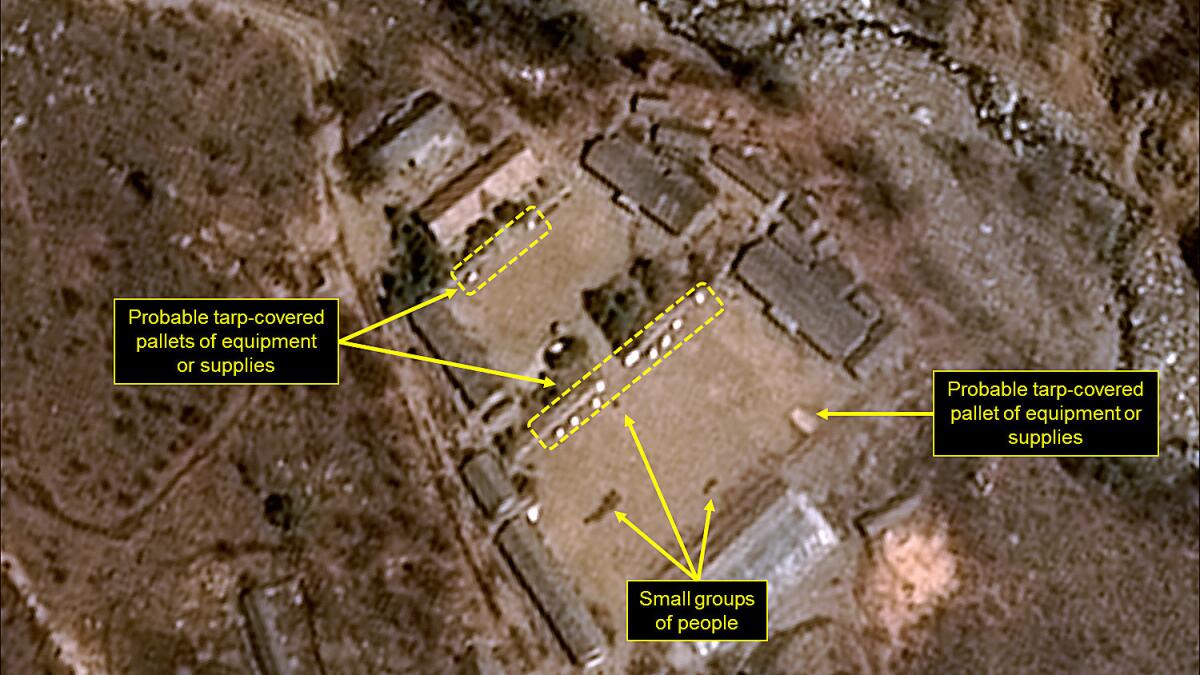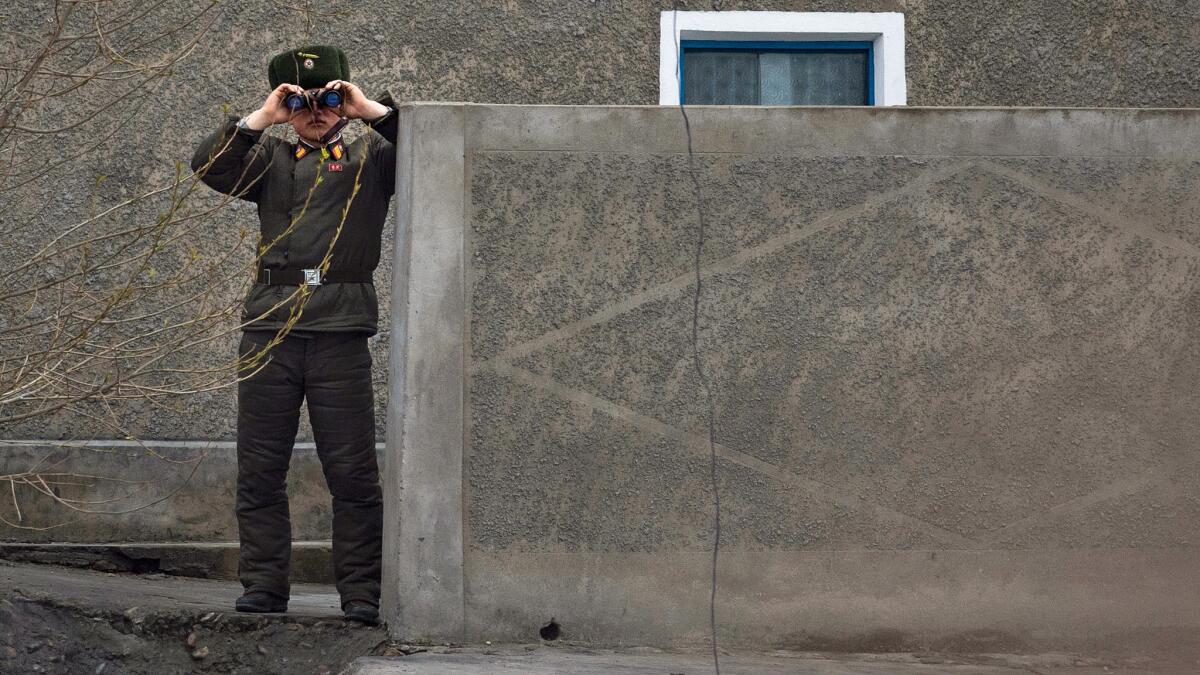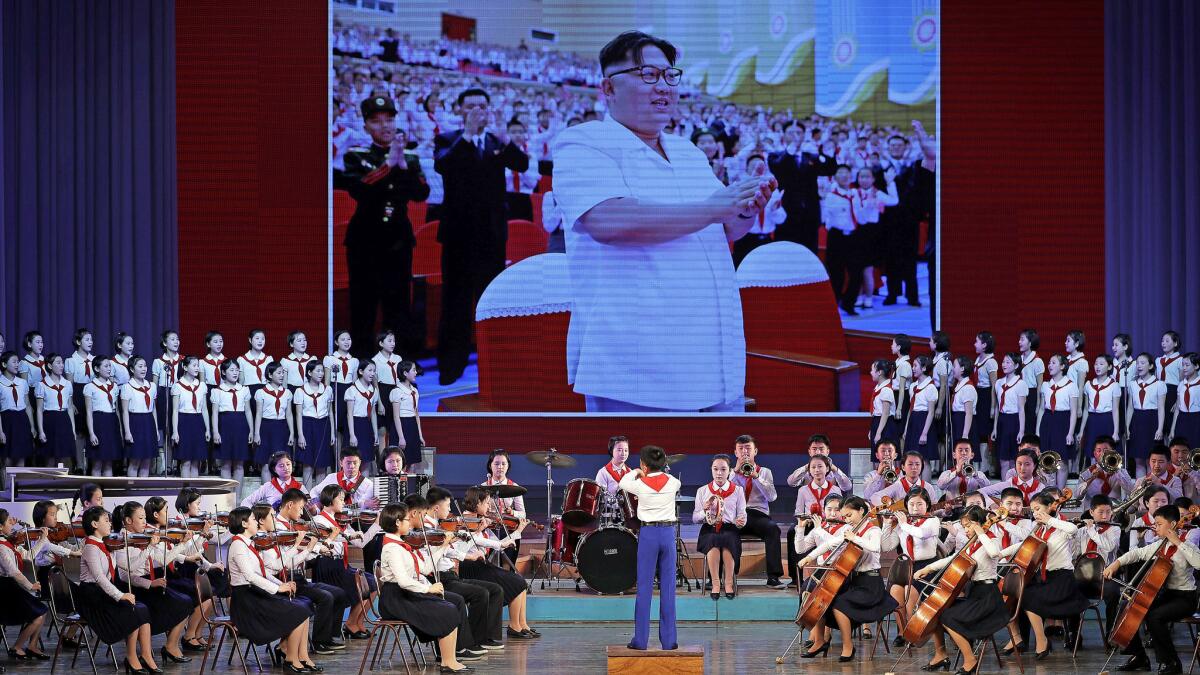North Korea’s push over the years to become a nuclear power

- Share via
Since North Korea conducted its first nuclear test in 2006, the United States, South Korea, China and other nations have tried to stop Pyongyang from becoming a fully armed nuclear state. Yet despite its abject poverty and isolation, North Korea has made remarkable technical progress putting together a workable nuclear weapon.
The tests have been conducted in the northeast sector of North Korea, an isolated and heavily forested area about 6,000 feet in elevation. The nearest city or town is 14 miles away. Experts outside North Korea typically analyze the seismic signature of each explosion and attempt to collect atmospheric samples by "sniffer" spy planes.
Here is a look at the four tests conducted by North Korea and the international response to them.
Oct. 9, 2006
Do not ‘worsen the situation’
Nearly four years after dropping out of the Nuclear Nonproliferation Treaty, North Korea tested its first nuclear weapon. The explosion measured 4.2 in magnitude. Small by nuclear standards, it was considered a failure. But the
World leaders urged the North's leader,

May 25, 2009
‘Proud nuclear power’
North Korea announced it had conducted its second nuclear test. The U.S. Geological Survey recorded a magnitude 4.7 tremor in the northeast. The test followed months of tension during which North Korea had repeatedly rejected international pleas to abandon its burgeoning nuclear program. Analysts also believed that Pyongyang was irate over criticism by the U.S., Japan and South Korea of its rocket launch weeks earlier and had grown impatient at the lack of attention from the
"Such provocations will only serve to deepen North Korea's isolation. It will not find international acceptance unless it abandons its pursuit of weapons of mass destruction and their means of delivery," President Obama said. During his first term, the White House played down North Korean threats and avoided visible reaction to provocations.
Weeks later, North Korea, calling itself a "proud nuclear power," vowed to forge ahead with its nuclear program in defiance of the U.N.

Feb. 12, 2013
‘Bombs over electricity’
This was the first nuclear test carried out under
"Perhaps the greatest impact of this nuclear test is that it will signal that the Kim Jong Un regime, like its predecessors, has chosen bombs over electricity," said one expert.
The Obama White House, now in its second term, staged a series of military moves, highlighting them with public announcements. Meanwhile, the Pentagon bolstered missile defense forces in Alaska with 14 interceptors in response to North Korea's threats of attacks.

Jan. 6, 2016
A first using fusion technology
The blast of what North Korea called a "miniature" hydrogen bomb registered around 5.1 in magnitude, and the success of it was questioned by scientists and the White House. This would mark the country’s first test using fusion technology; the three previous nuclear tests are all believed to have used plutonium-based, or possibly uranium-based, atomic weapons.
South Korean President Park Guen-hye stepped up an already unusually strong push to condemn North Korea, telling Parliament that Pyongyang’s insistence on developing nuclear weapons would lead to the regime’s demise.
Aides to President Obama said that military options remained on the table but that the president was focused on diplomatic responses.
Secretary of State John F. Kerry said in a statement, “We do not and will not accept North Korea as a nuclear-armed state, and actions such as this latest test only strengthen our resolve.”
Further condemnation came from South Korea, Japan, China and Russia, along with various arms control organizations.
Sign up for Essential California
The most important California stories and recommendations in your inbox every morning.
You may occasionally receive promotional content from the Los Angeles Times.







